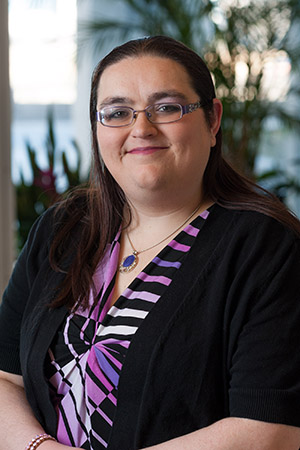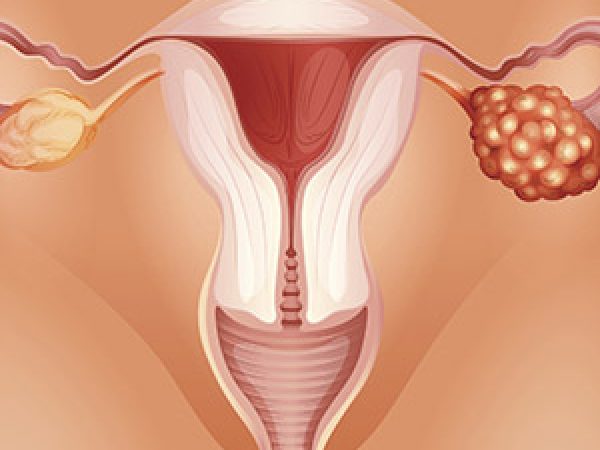Early-career Perspectives: What I Learned About Grant Writing as a Peer Reviewer for Foundation Grants
Guest Post by Angela Alexander, PhD
Member of the AACR’s Associate Member Council Communications Committee
Editor’s Note: Angela Alexander, PhD, is a member of the Associate Member Council (AMC)-led Communications Committee. Formed in 2015, this is one of three AMC-led committees created to assist the AMC in engaging with the associate members of the American Association for Cancer Research (AACR) and to allow the AMC to expand their career development programming and initiatives. The goal of the AMC is to foster excellence in cancer research through initiatives related to communications, education and training, and collaboration.
Prior to the recent National Institutes of Health (NIH) funding increase for fiscal year (FY) 2016, the rates at which the NIH and other federal agencies were able to fund grants had been at an all-time low. Even established investigators have to spend a larger proportion of their time juggling many grant applications year round to obtain the needed resources for their lab. It can be discouraging for young scientists who love doing science and want to continue in academic research careers to see their mentors constantly struggling to keep their labs alive. Early-career investigators who wish to compete successfully for large grants must not only produce stellar science, but also be creative and persistent when looking for funding to support their research. Alternatively, small grants from non-profit organizations can often serve as an untapped resource for postdocs and junior faculty to advance their work and obtain the necessary preliminary data for larger grants.
Recently, I had the opportunity of being a peer reviewer for a cycle of “seed” grants offered by a non-profit organization in my area of cancer research. Seed grants, which can be given out by non-profits or academic institutions, are small pots of money intended to generate preliminary data for larger grants or permit an investigator to test out a novel high-risk, high-reward hypothesis before spending the considerable effort it takes to acquire a major grant. While I have written multiple successful fellowship applications thus far in my graduate and postdoctoral career, it was my first time being on the other side of the process. Looking back on the experience, I am glad I agreed to serve as a reviewer as it taught me several lessons about grantsmanship, both positive and negative, that will inform my own grant writing going forward.
Looking back on the experience, I am glad I agreed to serve as a reviewer as it taught me several lessons about grantsmanship, both positive and negative, that will inform my own grant writing going forward.
The selection processes for grants offered by different grant-making organizations might vary, but for this particular organization, we followed a structured process similar to that used by federal agencies. The process involved both individually scoring the applications and a conference call to discuss and rank the top applications. Interestingly, a science-savvy patient advocate and a senior academic investigator led the review process as the co-chairs of the study section (unlike typical academic-only study sections run by NIH). After the call, a prioritized list was presented to the board of directors for final decisions.
The critiques covered the same five areas covered by reviewers of NIH grants – significance of the problem, investigator(s), approach, innovation, and environment. In addition, we also evaluated an important section called “Pathway to R01.” R01 grants are the larger five-year, renewable grants from NIH that cover the expenses incurred by the majority of biomedical laboratories. These grants are challenging to get since they need a large body of preliminary data that support the hypothesis and demonstrate feasibility of the idea and methods. Non-profit grants often do not provide sufficient funds to complete a large multi-year project; however, completion of the work described in these smaller “seed” grants will ideally result in the acquisition of a larger federal grant in the future. During the review process, the strongest applications we discussed had strong statements about the likelihood of attaining this crucial federal funding. For example, some applicants clearly stated whether the research had been previously submitted to NIH and delineated what the critiques of the application were (i.e., the gaps that would be filled by THIS foundation grant). Other particularly strong “R01” statements included an overview of future aims.
Donors to non-profit organizations have more specific goals than NIH, which seeks to improve human health globally. Through my peer-review experience, I learned that this distinguishing characteristic should affect the content and style of the grant application. The goal of this particular Request For Applications (RFA) was to fund research that would potentially directly benefit patients with cancer that had already metastasized. A few of the applications assigned to me for review proposed reasonable science, but did not fit the mission of the organization. We had to note this on our critiques, and it counted against the applicant for their lack of responsiveness to the organization’s research interests. The applicants who particularly emphasized how their work fit the mission of the organization received more favorable comments in the significance section.
On a personal level, participating in the grant review process has given me some unique insights I would not have otherwise received at this point in my career – and for that I am glad that I accepted and did my best to serve.
As a reviewer, I also learned some general tips about proposal writing. I appreciated the applicants who gave sufficient details about the investigators to define the synergies between the team members (i.e., basic scientists and clinicians who team up). An important take-home message from this point is if you are working with collaborators or patient advocates, include their biosketches and letters of support, as well as a clear explanation of how you have been working together already (if true). This allowed several applicants, who did not already have all the tools needed to conduct the proposed research, to demonstrate that they had established collaborations, and proactively obtained these resources (such as patient tissues). Some applicants included a table or figure of preliminary data using these items to exemplify this positive working relationship. By doing so, the reviewers could see that, logistically, the investigators would be ready to actually DO what they proposed to do, if funded. Moreover, a few of the applications had established connections with pharmaceutical or biotechnology companies, and these types of applications, that were based on solid science from the applicant’s lab, fared exceptionally well – they showed a clear path to the clinic, where the research would impact patients.
In summary, non-profit grants are great funding opportunities to establish track records and to provide funding for preliminary data for a larger research grant. To submit competitive applications to non-profits, propose great science – yes that goes without saying – however, even non-profit organizations have a slate of exciting proposals and to be successful, it is necessary to be detail-oriented and take into account the tips shared here to stand out. On a personal level, participating in the grant review process has given me some unique insights I would not have otherwise received at this point in my career – and for that I am glad that I accepted and did my best to serve. Proposal writing (and evaluation) is a skill I will need whether I stay in academia or pursue other career options after my postdoctoral fellowship.
Angela Alexander, PhD, is a TRIUMPH postdoctoral fellow at The University of Texas MD Anderson Cancer Center in Houston, Texas. Her research interests lie in translational science and molecular therapeutics in rare, aggressive breast cancers including inflammatory breast cancer and triple negative breast cancer. Prior to her current position, she obtained her doctorate in Molecular Carcinogenesis at The University of Texas MD Anderson Cancer Center in Smithville, Texas.




